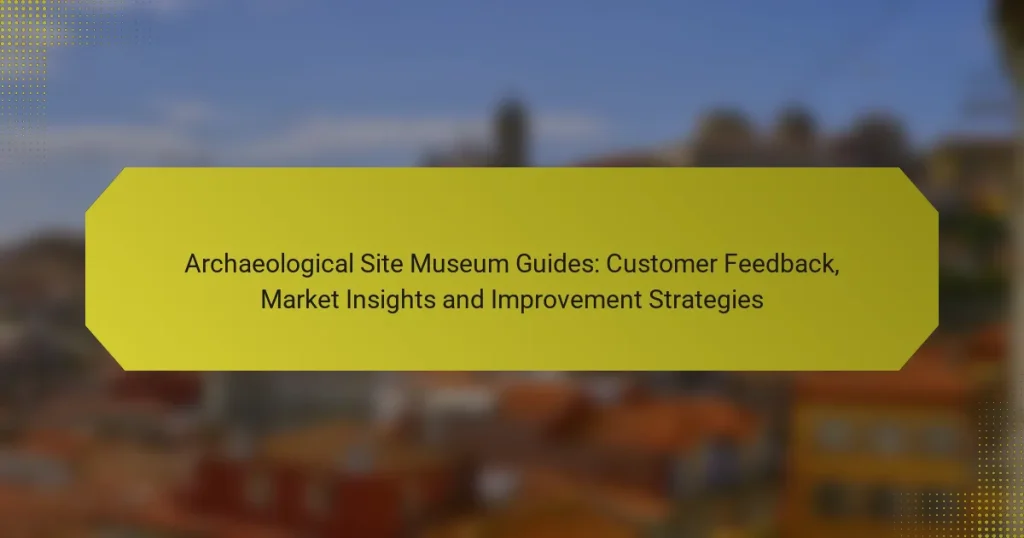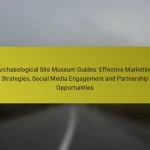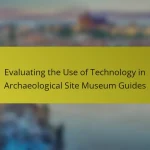Archaeological site museums can significantly enhance their operations and visitor experiences by leveraging customer feedback and market insights. By systematically gathering and analyzing visitor opinions, museums can identify areas for improvement and adapt their offerings to better meet audience needs. Understanding visitor demographics and trends further enables museums to make strategic decisions that boost engagement and satisfaction.

How can customer feedback improve archaeological site museums?
Customer feedback is essential for enhancing the operations and offerings of archaeological site museums. By actively collecting and analyzing visitor insights, museums can make informed decisions that lead to improved experiences and increased satisfaction.
Enhanced visitor experience
Improving the visitor experience starts with understanding what guests appreciate and what they find lacking. Feedback can reveal preferences regarding exhibition layouts, signage clarity, and interactive elements. For example, if visitors express confusion about a specific exhibit, museums can adjust the layout or add clearer descriptions to enhance understanding.
Additionally, implementing suggestions from visitors can lead to more engaging tours and educational programs. Regularly updating exhibits based on feedback keeps the experience fresh and encourages repeat visits.
Increased engagement strategies
Customer feedback can guide the development of engagement strategies that resonate with visitors. For instance, if surveys indicate a strong interest in hands-on activities, museums might introduce workshops or interactive displays that allow guests to participate actively. This not only increases visitor satisfaction but also fosters a deeper connection to the exhibits.
Utilizing social media to gather real-time feedback can also enhance engagement. Museums can encourage visitors to share their experiences online, creating a community around the site and attracting new audiences through word-of-mouth recommendations.
Targeted marketing efforts
Understanding visitor demographics and preferences through feedback allows museums to tailor their marketing strategies effectively. For example, if a significant portion of visitors are families, marketing efforts can focus on family-friendly events and educational programs. This targeted approach can lead to higher attendance rates and increased revenue.
Moreover, analyzing feedback can help identify the most appealing aspects of a museum, enabling more effective advertising campaigns. Highlighting popular exhibits or unique features in promotional materials can attract a wider audience and enhance overall visibility in the community.
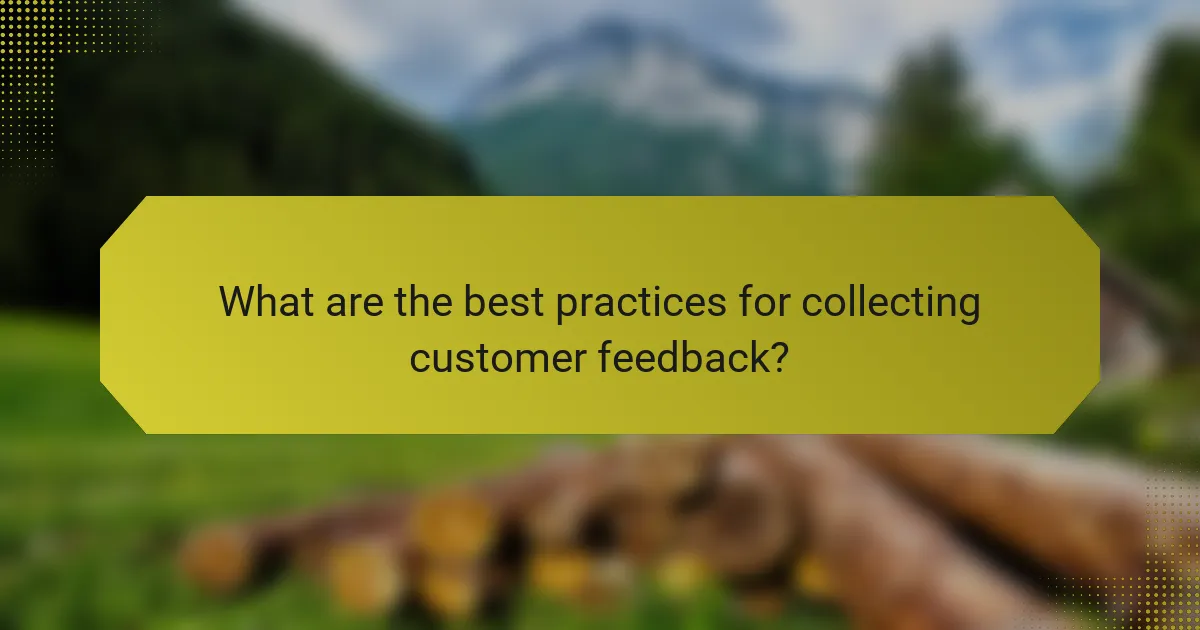
What are the best practices for collecting customer feedback?
Effective customer feedback collection involves using diverse methods to gather insights from visitors. Combining various approaches can enhance the quality and quantity of the data collected, leading to more informed decisions for museum improvements.
Surveys and questionnaires
Surveys and questionnaires are essential tools for gathering structured feedback from visitors. They can be distributed both online and on-site, allowing for flexibility in reaching different audiences. Aim for concise questions to maximize response rates, and consider using a mix of multiple-choice and open-ended questions.
To encourage participation, offer incentives such as discounts on future visits or small giveaways. Keep the survey length manageable, ideally between 5 to 10 questions, to respect visitors’ time while still collecting valuable insights.
Social media engagement
Engaging with customers on social media platforms is a powerful way to collect informal feedback. Encourage visitors to share their experiences and opinions by creating dedicated hashtags or prompts. Monitor comments and messages to gauge sentiment and identify common themes.
Responding to feedback on social media can enhance visitor relationships and demonstrate that their opinions are valued. Regularly analyze engagement metrics to understand which posts resonate most with your audience and adjust your strategy accordingly.
On-site feedback kiosks
On-site feedback kiosks provide a direct way for visitors to share their thoughts while their experiences are fresh. These kiosks can be equipped with tablets or touch screens, allowing for quick and easy responses. Position them strategically near exits or popular exhibits to maximize participation.
Consider using simple rating systems or quick surveys that take only a minute to complete. Ensure that the kiosks are user-friendly and accessible to all visitors, including those with disabilities. Regularly review the collected data to identify trends and areas for improvement.
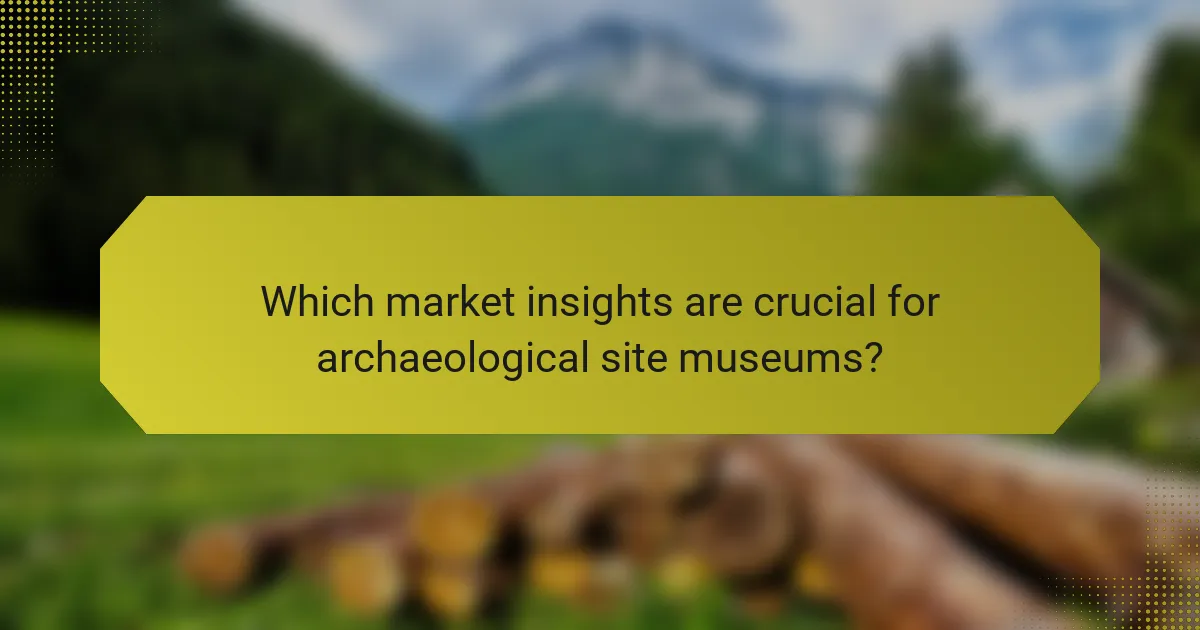
Which market insights are crucial for archaeological site museums?
Understanding market insights is essential for archaeological site museums to enhance visitor engagement and operational efficiency. Key insights include visitor demographics, trends in attendance, and the competitive landscape, all of which inform strategic decisions and marketing efforts.
Visitor demographics analysis
Analyzing visitor demographics helps museums tailor their offerings to meet the interests and needs of their audience. Key demographic factors include age, education level, and geographic location, which can influence programming and marketing strategies.
For instance, if a museum attracts a younger audience, it may benefit from interactive exhibits and social media marketing. Conversely, a museum with a predominantly older demographic might focus on traditional exhibits and guided tours.
Trends in museum attendance
Tracking trends in museum attendance provides insights into visitor behavior and preferences. Museums should monitor seasonal variations, special events, and promotional campaigns to identify what drives attendance.
For example, many museums see increased foot traffic during school holidays or cultural festivals. Understanding these patterns allows museums to optimize their scheduling and marketing efforts to maximize visitor numbers.
Competitive landscape evaluation
Evaluating the competitive landscape involves analyzing other museums and cultural institutions in the area. This includes understanding their offerings, pricing strategies, and marketing approaches.
By identifying strengths and weaknesses in competitors, museums can differentiate themselves and create unique value propositions. For example, if nearby museums focus heavily on digital experiences, an archaeological site museum might emphasize its unique artifacts and hands-on learning opportunities to attract visitors.
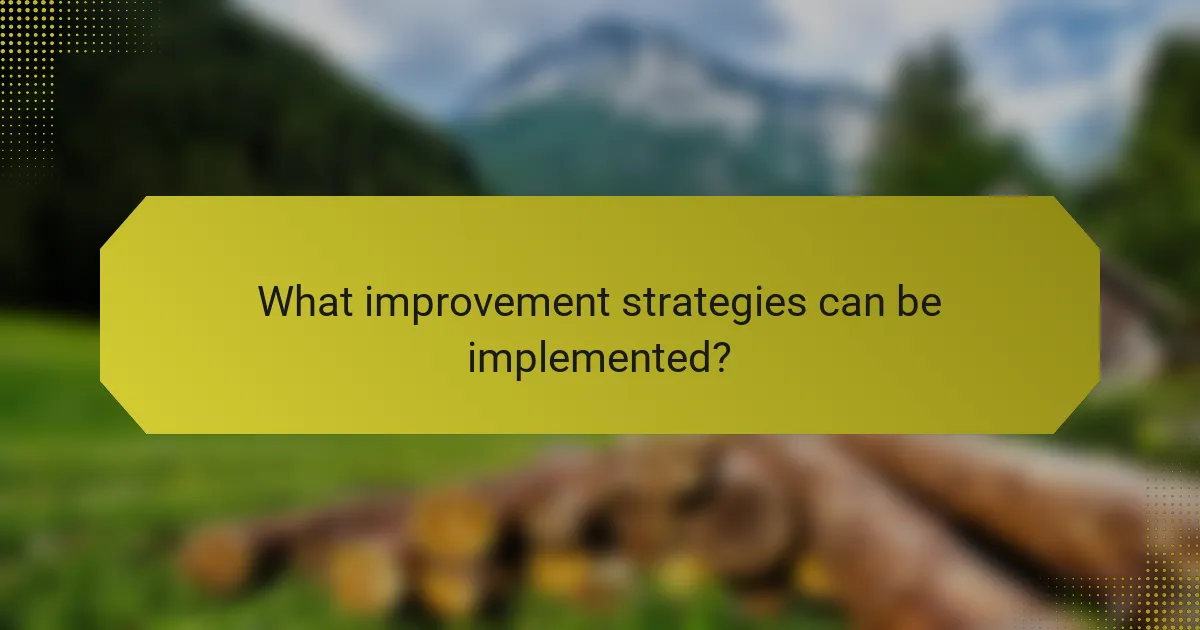
What improvement strategies can be implemented?
Improvement strategies for archaeological site museums focus on enhancing visitor experiences, increasing engagement, and optimizing operational efficiency. By implementing targeted changes in exhibits, staff training, and technology integration, museums can significantly elevate their offerings and attract more visitors.
Exhibit enhancements
Exhibit enhancements involve updating displays, improving signage, and incorporating interactive elements. Consider adding multimedia presentations or hands-on activities that allow visitors to engage with artifacts more deeply. Regularly refreshing exhibits can keep the content relevant and exciting, encouraging repeat visits.
When planning enhancements, gather visitor feedback to identify which aspects resonate most. For example, incorporating local history or cultural narratives can create a stronger connection with the community, making the exhibits more relatable and meaningful.
Staff training programs
Staff training programs are crucial for ensuring that museum personnel are knowledgeable and can provide excellent customer service. Regular workshops and training sessions can help staff stay updated on the latest archaeological findings and exhibit details, enhancing their ability to engage with visitors.
Consider implementing role-playing scenarios to prepare staff for various visitor interactions. This can improve their confidence and communication skills, leading to a more enjoyable experience for guests. Additionally, encourage staff to share insights and feedback on visitor interactions to continuously improve training content.
Technology integration
Technology integration can significantly enhance the visitor experience at archaeological site museums. Utilizing mobile apps, augmented reality, or virtual tours can provide deeper insights into exhibits and allow for a more immersive experience. For instance, an app could offer detailed artifact information or audio guides tailored to individual interests.
When integrating technology, ensure that it complements the physical exhibits rather than detracting from them. It’s essential to provide clear instructions and support for visitors who may be less tech-savvy. Regularly assess the effectiveness of these technologies through visitor feedback to make necessary adjustments and improvements.
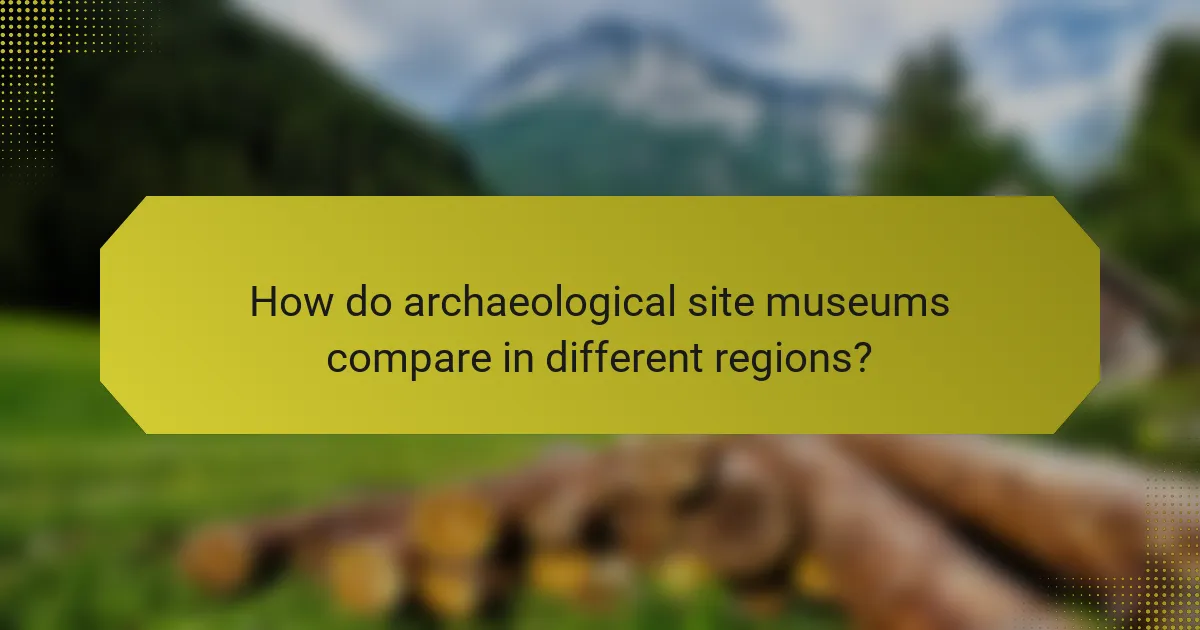
How do archaeological site museums compare in different regions?
Archaeological site museums vary significantly across regions due to differences in visitor demographics, funding sources, and cultural significance. Urban museums often attract larger crowds and have more resources, while rural sites may rely on local community support and tourism to thrive.
Visitor preferences in urban vs. rural settings
In urban settings, visitors typically prefer interactive exhibits and modern amenities, reflecting a faster-paced lifestyle. These museums often incorporate technology such as virtual reality to engage a diverse audience.
Conversely, rural archaeological site museums may emphasize authenticity and local history, attracting visitors interested in cultural heritage. They often provide a more intimate experience, allowing for personal connections with the exhibits.
Regional funding opportunities
Funding for archaeological site museums varies widely by region, influenced by local government budgets, tourism revenues, and private donations. Urban museums may have access to larger grants and sponsorships due to their visibility and visitor numbers.
Rural museums often face challenges in securing funding but can benefit from community initiatives and partnerships with local businesses. Engaging local stakeholders can enhance funding prospects and foster a sense of ownership among residents.
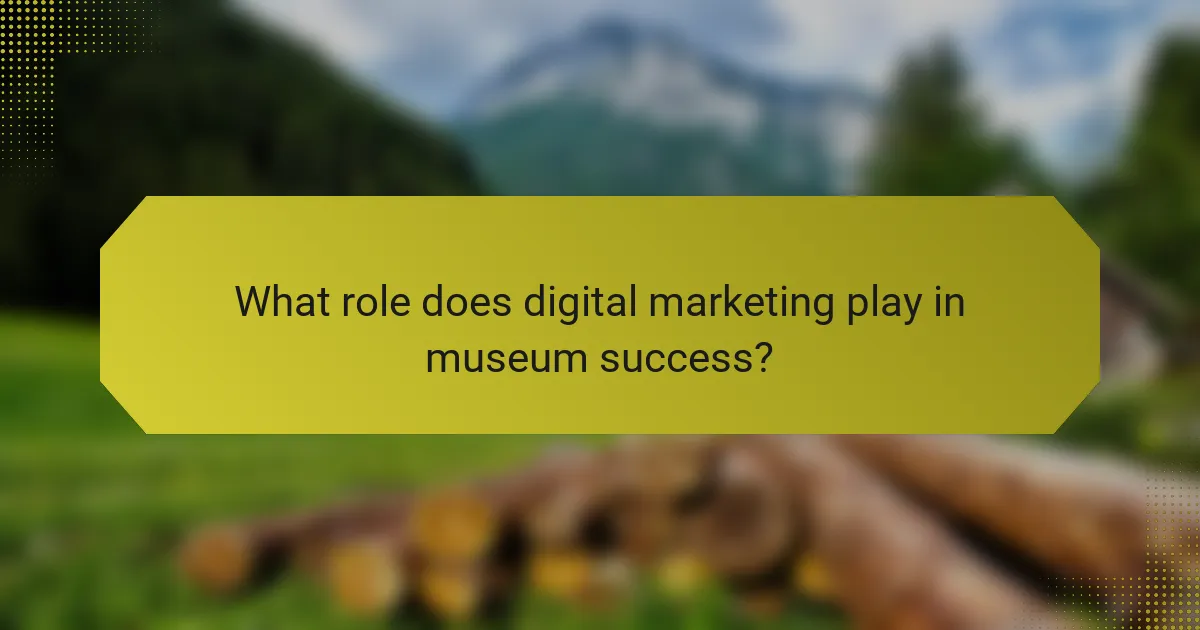
What role does digital marketing play in museum success?
Digital marketing is crucial for museum success as it enhances visibility, engages audiences, and drives visitor attendance. By leveraging online platforms, museums can reach broader demographics and create targeted campaigns that resonate with potential visitors.
Customer feedback in museum marketing
Customer feedback is essential in shaping effective museum marketing strategies. It provides insights into visitor experiences, preferences, and areas for improvement. Museums can collect feedback through surveys, social media interactions, and online reviews to understand what resonates with their audience.
Utilizing this feedback allows museums to tailor their marketing efforts, ensuring that promotions and exhibits align with visitor interests. For example, if visitors express a desire for more interactive exhibits, museums can adjust their offerings accordingly, enhancing overall satisfaction and loyalty.
Market insights for museum improvement
Market insights help museums identify trends and opportunities within the cultural sector. By analyzing visitor demographics, engagement patterns, and competitive offerings, museums can refine their strategies to attract and retain visitors. This may involve adjusting ticket pricing, enhancing digital experiences, or curating exhibits that reflect current cultural interests.
For instance, if data shows a growing interest in virtual tours, museums might invest in high-quality online experiences to reach remote audiences. Regularly reviewing market insights ensures that museums remain relevant and competitive in an evolving landscape.
Improvement strategies for museum marketing
Improvement strategies in museum marketing should focus on enhancing visitor engagement and experience. This can include implementing targeted social media campaigns, optimizing websites for user experience, and creating compelling content that highlights exhibits and events. Establishing partnerships with local businesses can also amplify reach and attract new visitors.
Additionally, museums should consider diversifying their marketing channels. Utilizing email newsletters, influencer collaborations, and community events can create a multi-faceted approach that engages different audience segments. Regularly assessing the effectiveness of these strategies will help museums adapt and thrive in a competitive environment.
